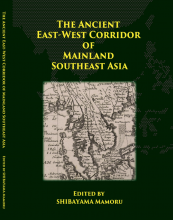The Ancient East-West Corridor of Mainland Southeast Asia
Table of Contents
The Ancient East-West Corridor of Mainland Southeast Asia
Introduction to the East-West Corridor
Part I
1-1 Previous Research on the East-West Corridor
1-2 East-West Cultural Exchange and Networks in Dvaravati
1-3 The Rise and Fall of Pre-10th Century Polities in Mainland Southeast Asia and the East-West Corridor: Rising Sun Silver Coins and Cotton Cloth
1-4 A Study on Pyu Trade Routes in Ancient Asia
1-5 Research on Suvaṇṇabhūmi in Lower Myanmar
Part II
2-1 The GIS-based Map of the East-West Corridor
2-2 The Significance of Dawei in the East-West Cultural Corridor
2-3 The Formation and Development of Fortified Cities in the Thaton Region of Southern Myanmar: The Structure and Geographical Setting of Archeological Sites
2-4 Archaeological Study on the Kiln Sites in the Southeast Part of Myanmar and Their Ceramics: Excavation of the Kaw Tar Kiln Site
2-5 The Cultural Exchange in the North-South Corridor: From the Perspective of a Study on Roof Tile
2-6 Chemical Analysis of Ancient Glass Beads in and around Mainland Southeast Asia
2-7 Japanese International Cooperation on Cultural Heritage in ASEAN: Myanmar and the EWCC Project

